Yukon Solaris Binoculars Review
Of all the binoculars manufactured by Yukon Advanced Optics Worldwide, it is the Solaris series that is to me the most interesting.
Consisting entirely of 50mm Porro prism models, these budget binoculars come in a range of magnifications, that starts with a low 7x power and ends with a massive 20x model, with everything in-between.
Due to this wide range, choosing which model is best will depend on your interests, be that boating, sailing, astronomy, birding, wildlife observation, hunting or security, there is a model for you.
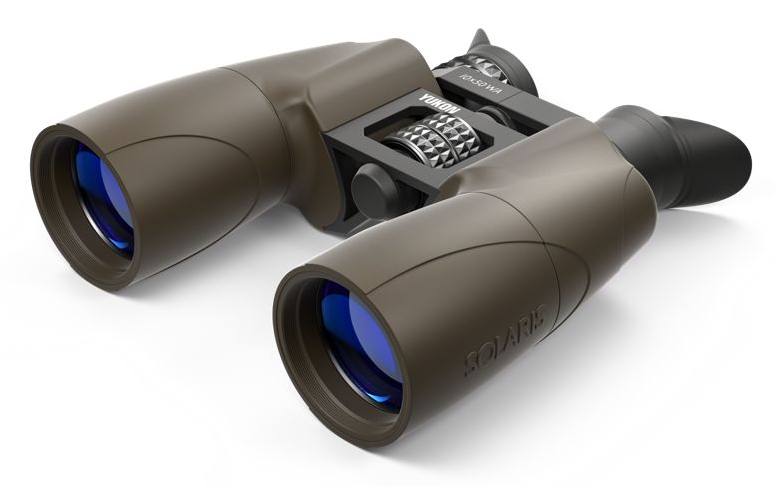
In this guide, I will first review the main features on the range of 50mm Yukon Solaris binoculars and then review each of the five different magnifications currently available, go over their main specifications to reveal what type of user or use they are ideally suited for.
Models
There are currently five models within the Yukon Solaris binocular series, all have 50mm lenses and have the tried and tested porro prism design:
- 7x50 Yukon Solaris WP
- 10x50 Yukon Solaris WP
- 12x50 Yukon Solaris WP
- 16x50 Yukon Solaris WP
- 20x50 Yukon Solaris WP
Main Features
Design
From their flared eyecups to the focus wheel embedded within the central bridge, the Yukon Solaris binoculars sport a modern twist to the somewhat traditional Porro prism body design, which is not only comfortable and ergonomic to hold, but which I think looks great.
Chassis
Unlike many/most binoculars at this price range that will have a polycarbonate plastic housing, Yukon Optics has gone with a slightly heavier, but certainly stronger alloy chassis which is great to see.
Yukon Solaris binoculars are sealed and have an IPX6 degree of water resistance and so whilst they shouldn’t be fully submerged in water, they will survive even the heaviest of downpours.
Exterior
As normal, these instruments then have a rubber armor exterior that adds a level of protection to the optics as well as improving grip, which can be important in the wet or when wearing gloves when it is cold.
Flared Eyecups
It is not often that I add the eyecups to the list of highlights on a binocular, but these are well worth mentioning.
Similar to those used on many Steiner binoculars, their side-shield design is such that they eliminate the often distracting light that coming in from the gap between the cups and the sides of your face.
Whenever I have used a binocular with this design of eyecup, I have really found them useful as it makes the experience more immersive and actually improves the view as no light reflects off the ocular lenses and so do wonder why you don’t see them more often.
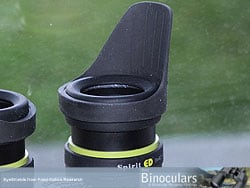
Note, you can buy them separately to add to your existing binoculars – for more, check out my Binocular EyeShields Review.
Accessories
With a soft, but padded carry case, neck strap, lens covers, cleaning cloth, user manual and warranty card, the included accessories are very typical and not much to write home about, except for the objective lens covers:
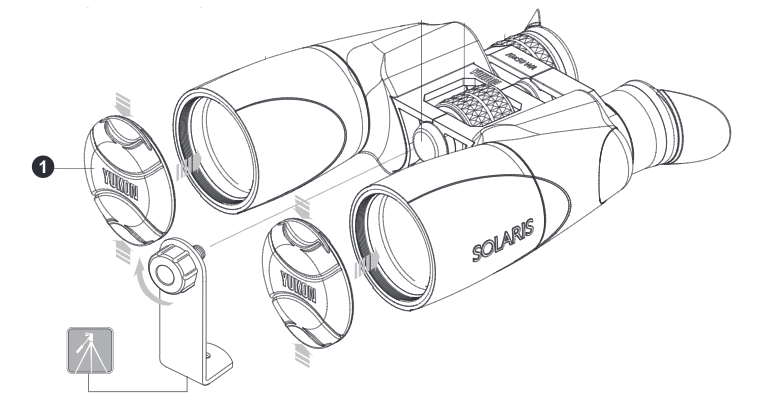
Objective Lens Covers
Very similar to the lens covers you find on an expensive camera, they are spring loaded and thus fit within the ends of the barrels and with their quick release clips offer plenty of protection and are easy to take off and replace. The only downside I would say is that they are not tethered to the binocular and so you have to be careful not to misplace them.
Optical Features
All Yukon Solaris binoculars use Porro prisms inside the chassis to rectify the image and this is what gives them distinctive shape. Whilst not as compact as a Roof prism, at this price range it is often a better choice as it can produce a better optical performance without the need to apply expensive coatings. For More: Is a Roof or Porro Prism Best?
The 50mm objective lenses are also interesting in that they are larger than your typical 42mm binocular, but not by too much so as to make the binocular too big and heavy to carry about all day. Thus you get improved light capture but without a massive weight and size penalty.
Anti-Reflection Coatings
The optical system is described as “Multicoated“. This is important as it means that that they use multiple layers of anti-reflective coatings on some but not all of the lens surfaces.
This is good, but it has to be said, it is disappointing that they are not Fully Multi-Coated, which would improve light transmission even further.
Yukon Solaris 7x50 WP Binoculars
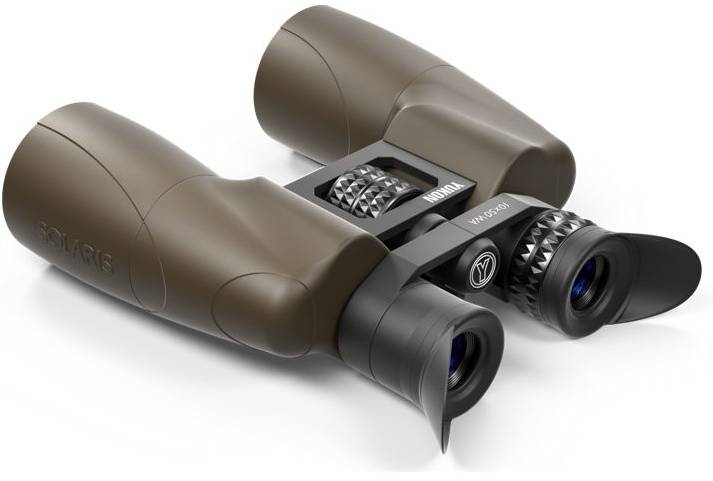
Ideal uses for these and indeed most 7x50 binoculars include bird watching, marine uses as well as hand-held astronomy binoculars and here is why:
Large Exit Pupil
Firstly, the slightly larger than standard 50mm lenses are able to capture more light than your typical 42mm lenses. However, when this is combined with a 7x magnification it produces a 7.1mm exit pupil that is extremely large. This ensures that you are able to view a bright image even in very low light conditions. For more on why and how this helps check out my complete guide to the exit pupil.
Wider Views
Next, the low 7x power helps produce a wide field of view that is great for quickly locking onto a fast moving bird, or taking in full star constellations without having to pan the view about.
Although it has to be said, with a 6.5-degree angle of view which translates to a Field of View (FOV) that is 114m wide at 1000 meters, for a 7x binocular the view width on these is sufficient, but not particularly wide.
Steady Image = Better Views
This low 7x magnification also means that you get less image shake made by the small movements of your hands. For boating on an already unsteady platform, this is obviously important. But as a binocular for astronomy, it means you do not have to use a tripod to achieve sharp shake free views of the stars, planets or the moon.
Extremely Long Eye-Relief
At 30mm, this Yukon Solaris 7x30 binocular has extremely long eye-relief. For those who wear glasses, this is great news as you are sure to be able to use them whilst wearing them and be able to achieve the full image without dark rings on the edges.
Yukon Solaris 10x50 WP Binoculars
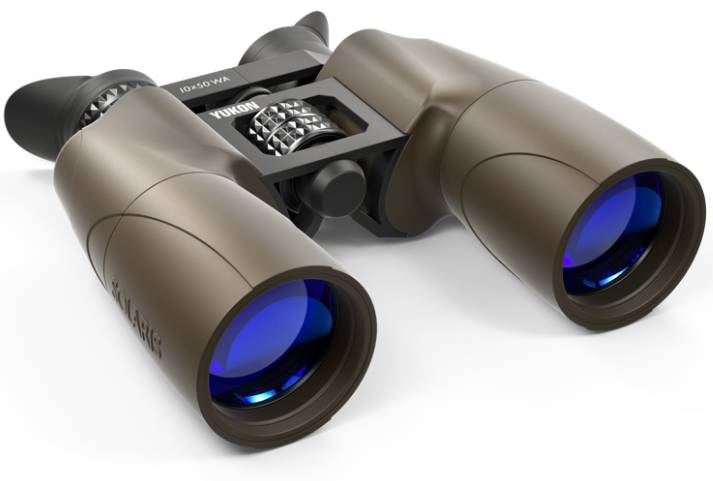
Versatile
Combining largish 50mm lenses with a reasonably powerful 10x magnification, the 10x50 version of the Yukon Solaris is probably the most versatile of all the models in this range and good for most general outdoor uses, wildlife observation, a bit of astronomy, and even some longer range birding:
Well Balanced
The 10x50mm configuration produces a 5mm exit pupil, which may not be as large as the 7x50 version, but it is still reasonably large and thus will also maintain a reasonably good performance in low light.
However, with the 10x power you gain more reach and great image detail. On the negative side, you do lose out on the width of the view and so this combination makes this Yukon Solaris 10x50 binocular more suitable for mid to longer ranges.
Long Eye-Relief
Whilst nowhere as long as that on the 7x50 model above, the 17mm, should still be sufficient for eyeglass wearers.
Yukon Solaris 12x50 WP Binoculars
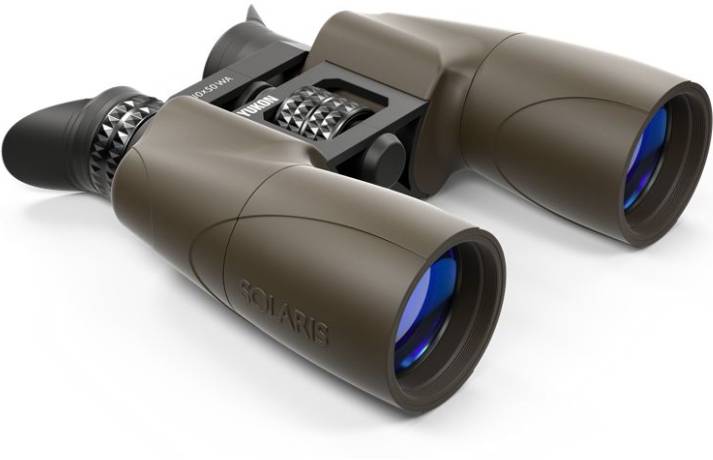
Longer Distances
Whilst the high power definitely restricts the field of view (it is just 92m @1000m on these), but over longer distances, in wide open spaces like on a field, in the hills or at the coast and in reasonably good light, the 12x50 configuration is one of my favorites.
Indeed instruments like the Athlon Midas 12x50 Binoculars are definitely amongst my favorites for uses like wildlife observation and long-range birding and I would also highly recommend them as a security, search and rescue or hunting binocular.
Hand Holdable
The 12x magnification is powerful, but you are still able to achieve a reasonably steady image for terrestrial uses without having to resort to using a tripod.
Minimal Eye-Relief
As well as reducing the width of the view and producing a smaller exit pupil, another disadvantage of increasing the magnification is that it often results in a shallower eye-relief. At 12mm on these, this is fine for most users, but will probably not be sufficient if you need to use glasses when binning.
Yukon Solaris 16x50 WP Binoculars
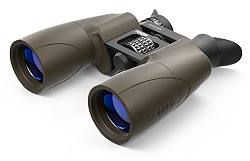
Long Range
With such high power, these Yukon Solaris 16x50 binoculars are obviously designed for achieving a good level of detail at long-ranges.
Small Exit Pupil
The 16x50mm combination produces a relatively small 3.1mm exit pupil indication that these are best used in good light conditions as their low light performance will not be great. it is for this main reason that they are also not recommended for astronomy.
Narrow Field of View
Another negative to this high power is the reduction in the width of the view. At long range and viewing stationery or slow objects, this will not be a major issue, but I would not really suggest these for use at closer ranges or for uses like airplane spotting where for me a wider view would be preferable.
Image Shake
At 16x, the powerful magnification is right on the edge of what I can use by hand and still achieve a reasonably steady view, so as to get a good amount of image detail and even then it is only for short durations.
Therefore, I highly recommend that you mount these binoculars onto a tripod. Luckily this is easy enough using a standard tripod adapter that will fit in-between the barrels using the normal 1/4 inch thread.
Yukon Solaris 20x50 WP Binoculars
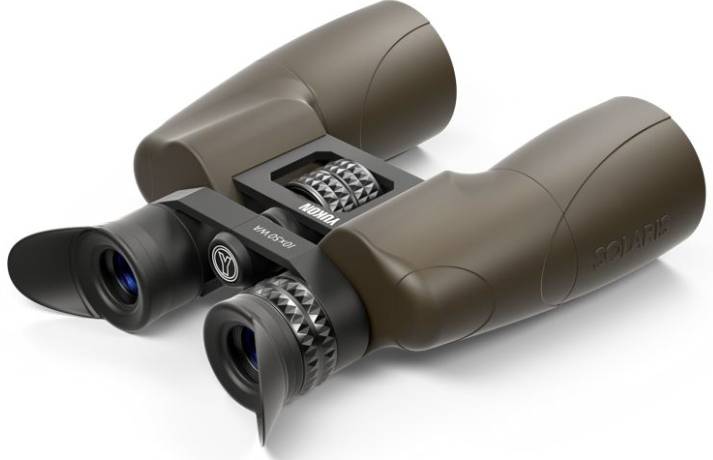
Extremes
Whilst the 16x50 combination used on the model above is pretty unique, combining an extremely powerful 20x magnification with large, but not huge 50mm lenses on this Yukon Solaris 20x50 WP binocular is somewhat extreme and as such will only suite a few very small niche uses.
Tripod Essential
Similar to the 16x version above, but more extreme, the reasonably small size and low weight of these (all models use the same body) makes them easy to transport and may make you want to use them from the hands, but to get a steady image, you will almost certainly need to mount them onto a tripod.
Daytime Use
Most binoculars with such high magnifications will use even larger lenses in order to maintain a reasonably large exit pupil, but at the expense of increased weight and size.
The small 2.5mm exit pupil created by the 20x50mm configuration means these are most certainly best reserved for daytime use and in good light conditions.
Main Specifications
| Model | SKU | Prism | AOV | FOV | Min Focus | Eye Relief | Weight | Dim(in) |
| Solaris 7x50 WP | 22201 | Porro | 6.5° | 114m | 4m | 30mm | 35.3oz | 8.6x7.6x x 2.6" |
| Solaris 10x50 WP | 22202 | Porro | 6° | 105m | 5m | 17mm | 35.3oz | 8.6x7.6x x 2.6" |
| Solaris 12x50 WP | 22203 | Porro | 5.3° | 92m | 6m | 12mm | 35.3oz | 8.6x7.6x x 2.6" |
| Solaris 16x50 WP | 22204 | Porro | 5.1° | 70m | 6m | 10mm | 35.3oz | 8.6x7.6x x 2.6" |
| Solaris 20x50 WP | 22205 | Porro | 4° | 55m | 6m | 10mm | 35.3oz | 8.6x7.6x x 2.6" |
Further Reading
Yukon Binoculars – All about Yukon Optics and their binoculars, also includes the specifications of these and all their other models.

 Article | Posted by Best Binocular Reviews
Article | Posted by Best Binocular Reviews 
 Categories:
Categories:  Tags:
Tags: 
